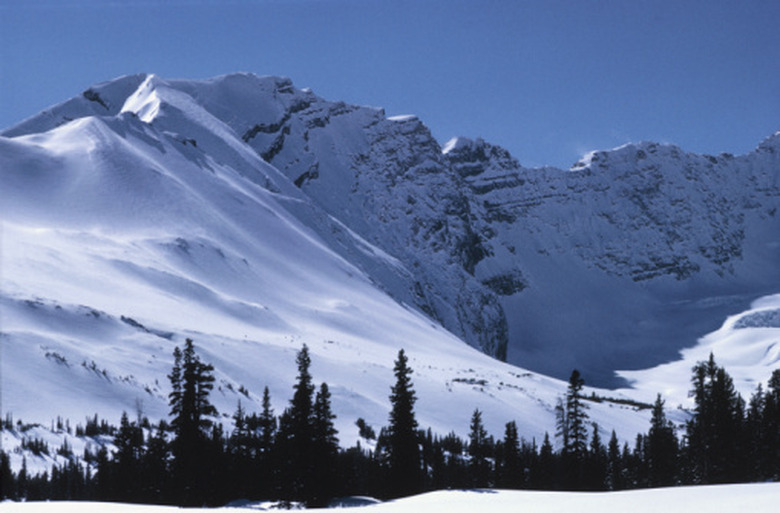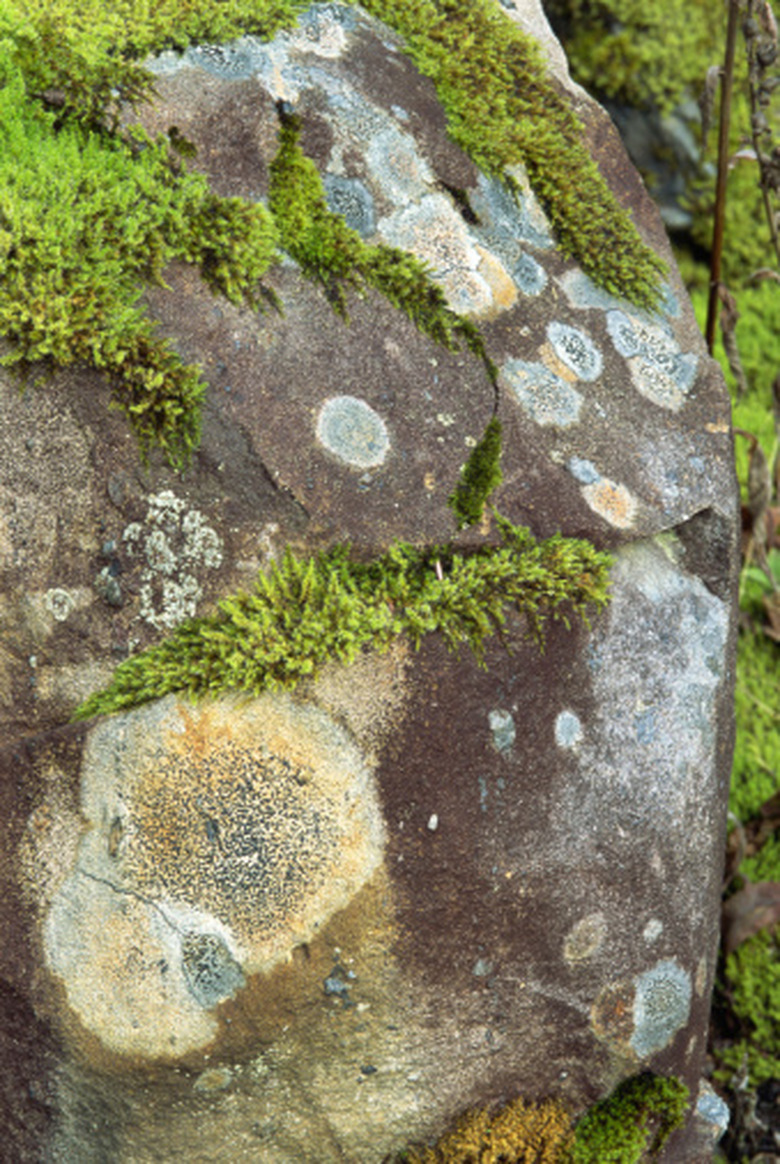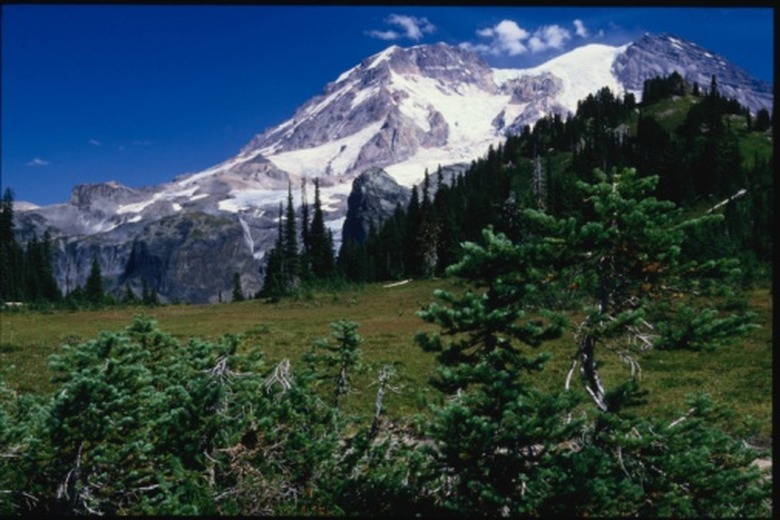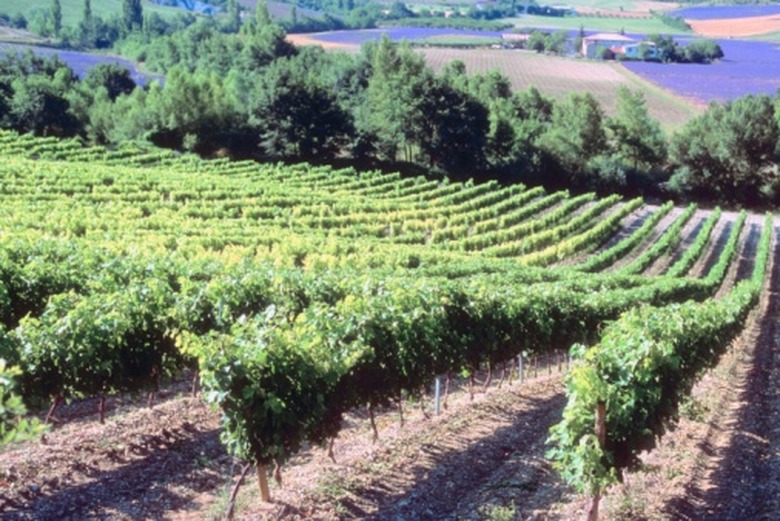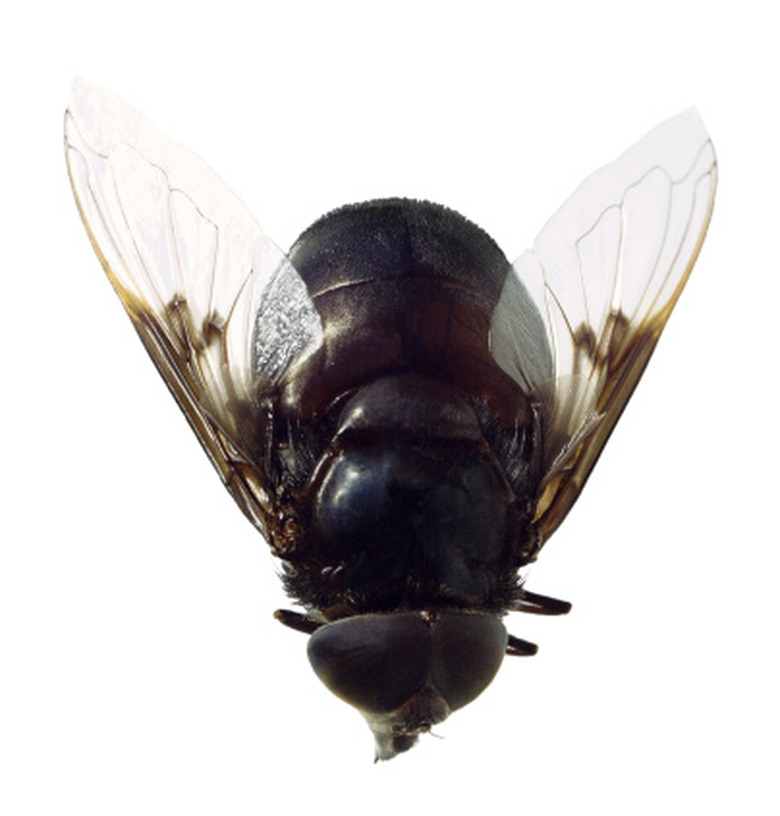How Does Altitude Affect Plant Life?
Why are trees shorter on mountains? This has to do with altitude. From sea level to timberline and beyond, plant life is influenced by altitude. As the altitude increases, climate changes. The air becomes colder and drier, affecting plant life accordingly. Many plants have adapted strategies for surviving at high altitudes, and though other factors are contributors, directly or indirectly, altitude plays a part in the development and survival of all plant life.
The Challenge of High Altitude
The Challenge of High Altitude
Because of the limits set by altitude, trees do not grow beyond the timberline (tree line). At that altitude air pressure is less and carbon dioxide is greatly reduced. Carbon is essential to the survival of all plant life.
Near the timberline, trees become smaller, scattered. Growth becomes stunted or distorted. Leaves are smaller, with less surface area to absorb the energy-giving carbon dioxide they need.
Only scrub, a few hardy wildflowers, lichens and moss will venture beyond the tree line and into the alpine region above. Scrub growth is small. It sprawls close to the ground for protection from the dry, alpine air. Tuft grass, lichen and moss carpet the ground, trapping what little humidity is available.
Altitude and the Subalpine
Altitude and the Subalpine
In the sub-alpine below tree line, the forest is dotted with meadows where wildflowers grow in abundance and deer and elk forage for food. The sub-alpine extends downward from about 11,500 feet to 9,000. According to a USDA report, a three-year study shows that forage in the high meadows after pack horses are picketed there to graze is slower to recover after grazing than in meadows at lower elevations.
Whether or how this significantly relates to global crop productivity has not been established. Although altitude is always at work, other factors contribute to its effect on plant life.
Crop Quality at High Altitudes
Crop Quality at High Altitudes
Latitude, too, plays a part. The tree line does not occur at the same altitude in all parts of the world. Coffee crops grow at altitudes of up to 7,000 feet in the Bolivian Andes, where peaks soar to 17,000 feet. Coffee grown at high altitudes is well known for excellent flavor.
In the mid to high temperate zones in the northern hemisphere, tree line occurs at 12,000 feet or less. According to researchers, grapes grown at elevations of 4,500 feet receive more direct sunlight and are of better quality than ones grown at lower elevations.
Altitude and Pollination
Altitude and Pollination
Indirectly, altitude plays a part in pollination. If the altitude is inhospitable to the bees or other insects that pollinate the blossoms of fruit trees and plants, crops can suffer. The long-tongued bee fly common to elevations between 4,500 and 5,500 feet has a profound effect on the pollination of nectar-producing flowers, but the bee fly cannot survive outside its habitat, so again, altitude is in control.
Wind, though, plays a part with altitude in the limits set for successful pollination. Wind increases with altitude. A strong wind will often sweep the trees clean of blossoms before the pollination process is complete.
Adaptations for High Altitudes
Adaptations for High Altitudes
Plants that live at high altitudes are exposed to a variety of stressful conditions: high exposure to UV light, extreme variations in temperatures, strong winds and fluctuating moisture conditions.
To survive conditions at high altitudes, plants have developed a number of coping strategies. Many plants at high altitudes are small, reducing their exposure to the elements. Others are covered in downy hairs to conserve moisture and protect their leaves from intense sunlight. Some alpine plants seek shelter in microclimates between rocks, and others develop succulent leaves or evergreen needles to survive drought conditions.
Cite This Article
MLA
DeVaney, Vera. "How Does Altitude Affect Plant Life?" sciencing.com, https://www.sciencing.com/how-does-altitude-affect-plant-life-12532172/. 1 December 2021.
APA
DeVaney, Vera. (2021, December 1). How Does Altitude Affect Plant Life?. sciencing.com. Retrieved from https://www.sciencing.com/how-does-altitude-affect-plant-life-12532172/
Chicago
DeVaney, Vera. How Does Altitude Affect Plant Life? last modified March 24, 2022. https://www.sciencing.com/how-does-altitude-affect-plant-life-12532172/
